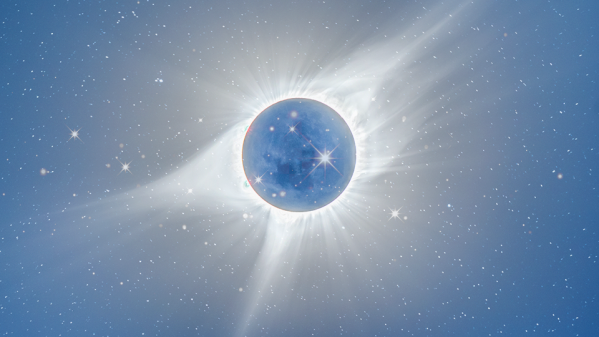On Saturday, October 14, a celestial spectacle will grace the skies as the moon positions itself directly between the Earth and the sun, casting its shadow upon our planet. This event will manifest as an annular “ring of fire” solar eclipse and will be visible in specific regions, primarily across the Western United States, Mexico, and Central and South America. The path of this eclipse is of particular cultural significance to Indigenous communities in the Four Corners region, including the Navajo Nation. As a result, some tribal lands, including all Navajo Tribal Parks and the iconic Monument Valley, will be closed to visitors on Saturday to honor cultural traditions.
Unlike a total solar eclipse where the moon entirely obscures the sun, an annular eclipse allows a ring-like halo of sunlight to encircle the moon’s silhouette. This effect is due to the moon being slightly farther from Earth in its orbit during annular eclipses, making it appear slightly smaller than the sun. The term “ring of fire” stems from this captivating phenomenon. It’s a relatively rare event, with only 12 more annular eclipses expected this decade, scattered across the globe.

img from google
The Upcoming Annular “Ring of Fire” Solar Eclipse
On Saturday, October 14, skywatchers will be treated to a celestial spectacle as the moon positions itself directly between the Earth and the sun, casting its shadow upon our planet. This event, known as an annular “ring of fire” solar eclipse, will be visible in specific regions, primarily across the Western United States, Mexico, and Central and South America. In this section, we’ll delve into the details of this unique eclipse and the cultural significance it holds for Indigenous communities.
The Cultural Significance of the Eclipse
The path of the annular eclipse on October 14 crosses through the Navajo Nation and lands of other Indigenous people in the Four Corners region. In this section, we will explore why this celestial event carries special cultural significance for these communities and how they observe and respect it. We’ll also discuss the closures of tribal lands in honor of these traditions.
Understanding the “Ring of Fire” Phenomenon
An annular eclipse differs from a total solar eclipse. In this section, we’ll explain the science behind the “ring of fire” phenomenon, including the moon’s position in its orbit and how it creates the captivating ring-like appearance during the eclipse.
Safety Precautions for Eclipse Viewing
While the eclipse offers a captivating visual experience, it’s crucial to protect your eyes. Under this heading, we’ll discuss the importance of eclipse safety, the risks associated with looking at the sun during an eclipse, and the safe methods for observing these celestial events.
A Glimpse into the Future: The 2024 Total Solar Eclipse
For those who may miss the upcoming annular eclipse or face unfavorable viewing conditions, there’s a promising event on the horizon. In this section, we’ll introduce the 2024 total solar eclipse, which will provide a unique opportunity to witness the sun’s ethereal corona. We’ll explore the path of this eclipse and the reasons to mark your calendars for this extraordinary event.

img from google
The occurrence of a solar eclipse may seem straightforward, but it relies on three specific cosmic conditions aligning perfectly. On a typical day, gazing directly at the sun can be harmful to the eyes, and an eclipse is no exception. NASA emphasizes that looking at the sun’s rays is never safe, as the intense solar light can damage the retina, potentially leading to a “permanent scotoma” or blind spot in one’s central vision. Even during partial or annular eclipses, where most of the sun is covered, the remaining crescent sun still emits intense light capable of causing retinal damage, even though the illumination levels may resemble twilight.
For safe eclipse viewing, indirect methods should be employed. These methods include projecting the eclipse onto a screen using a pinhole or utilizing specially designed eclipse-viewing filters to protect your eyes.
If you miss the upcoming eclipse or cannot view it due to unfavorable weather conditions, don’t despair, as there is another significant eclipse event on the horizon. In 2024, the United States will witness a total solar eclipse on April 8. During a total eclipse, the moon completely obscures the sun, offering a breathtaking view. It allows observers to witness the sun’s ethereal corona, its outermost atmosphere, with the naked eye. This remarkable event will pass over much of the Eastern United States, providing a compelling reason to mark your calendars.
In summary, a solar eclipse, like the annular “ring of fire” eclipse occurring on October 14, results from the moon aligning perfectly between the Earth and the sun. These celestial events hold cultural significance for various communities and are awe-inspiring natural phenomena. However, safety precautions are paramount, as staring at the sun during an eclipse can lead to severe eye damage. Remember to use indirect viewing methods or eclipse-safe filters to enjoy these spectacular events while safeguarding your vision. If you miss the upcoming eclipse, take heart; a total solar eclipse in 2024 promises a captivating experience for those in the Eastern United States.